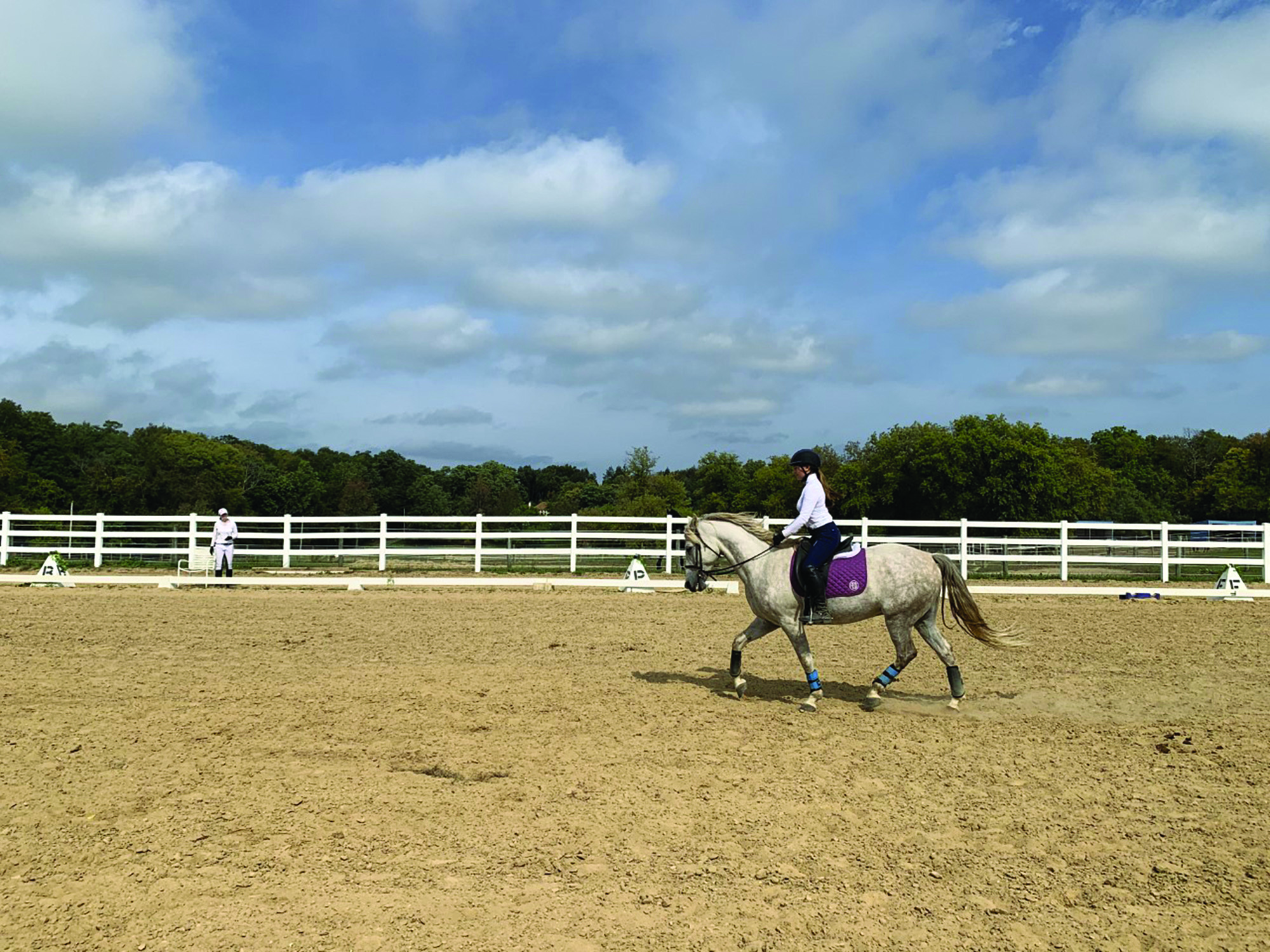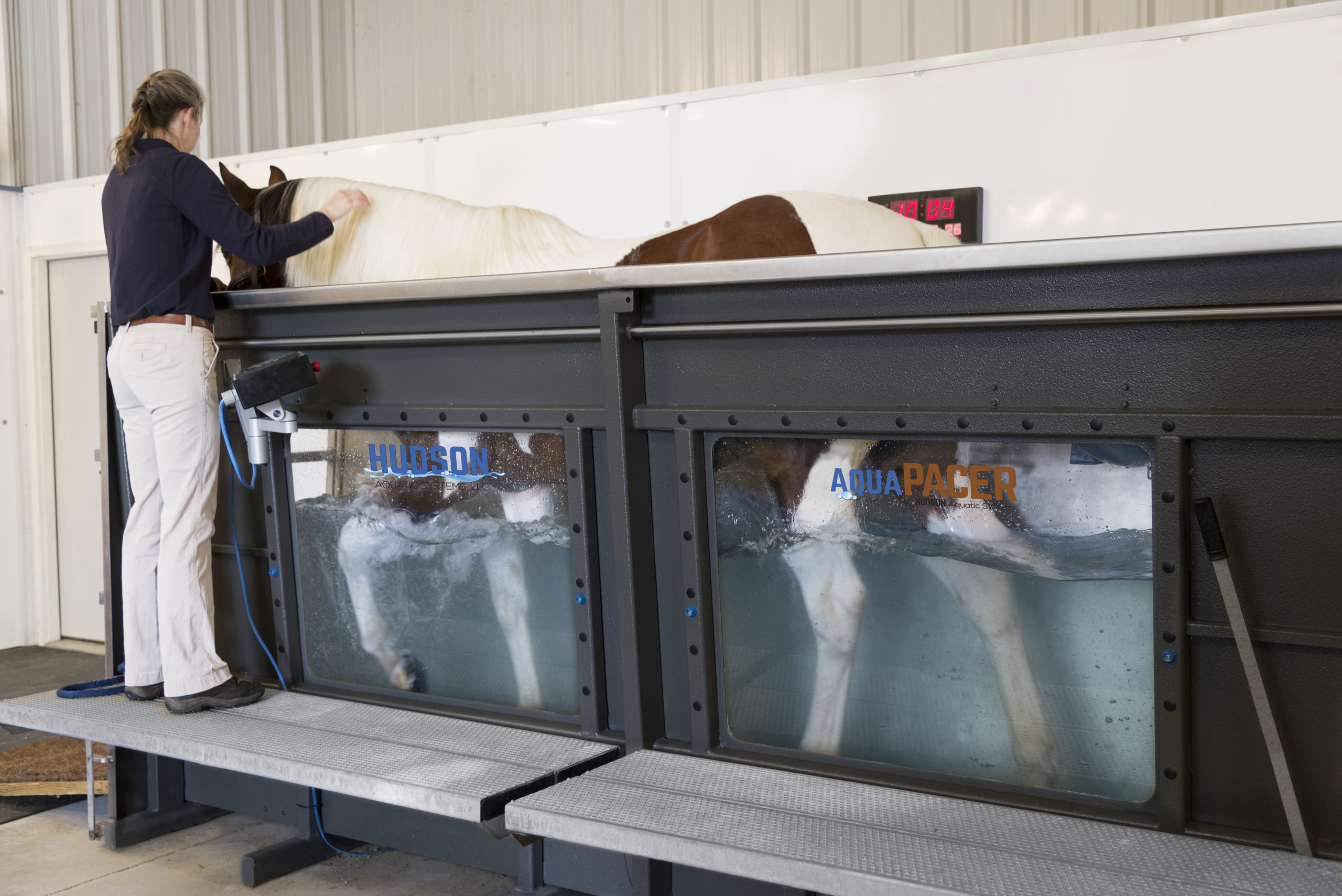A look at marginalized communities within the equestrian world, and how their growing representation is increasing inclusivity and accessibility.
On a crisp autumn morning, when other teenagers are likely still asleep, Maya Stillman is already making tracks in the arena. She collects her stately dapple-grey Andalusian, Bravo, and transitions into a powerful canter, the sweeping strides carrying her around the arena with ease. In a bustling dressage class, you would be hard pressed to find a rider executing cleaner flying lead changes or being more effortless in her overall position. When Maya is soaring over fences, her confidence is undeniable and her stellar scope difficult to miss.
What you might miss, however, is that Maya’s gaze is trained on her equine partner’s ears, occasionally moving toward the audience to search for her trainer. You may also miss Maya’s trainer signing “canter” before her seamless transition into the gait. What you might not see is that Maya is an equestrian with a disability.
Self-identifying as both a Person of Color and a person with a disability, Maya has had sensorineural hearing loss in both ears since the age of three. Sensorineural hearing loss results from damage to the inner ear and is the most common form of permanent hearing loss.1 Over the course of her young life, she has had eleven surgeries related to her ears and continues to battle countless chronic ear infections. An estimated one in ten Americans, myself and Maya included, have an invisible disability that impacts their daily lives but isn’t immediately evident to others.2
Shortly after her diagnosis, Maya had her first riding lesson and quickly discovered that horses were more than a hobby for her. Now, the high school student’s passion has led her to compete in dressage and show jumping, and guided her to her latest equine partner, Bravo. “I think he knew right away that I was different,” Maya says. “Over the last few months, he’s shown me some cool stuff!” Bravo has alerted Maya to obstacles or potential dangers that she might have otherwise missed: a herd of deer across the arena, a pasture mate performing a one-horse rodeo, and once a speeding car headed right towards the pair.
“Competing is always hard,” Maya admits. “I can’t hear the announcer or the starting alarms [and] I also can’t hear potential spook noises.” When riding, she uses a Bluetooth headset to communicate with her trainer, or will have gait changes signed to her from someone in the audience. As with most people who are disabled, the greatest obstacle for Maya isn’t her disability itself but the lack of accessibility and the stereotypes that surround being disabled. “There is definitely a stereotype, that only able-bodied riders can make it to the top,” Maya says. “I’ve had to work ten times harder than other riders my age and level to get to where I am.”
According to the WHO’s 2011 World Report on Disability, more than a billion people in the world are living with some type of disability.3 Yet, the “face” of the equine community doesn’t reflect this reality and remains unchanged: still as white, wealthy, and able bodied as it ever was. This is not a result of intentional discrimination against equestrians from minority communities; rather, it is the result of a cycle of misrepresentation.
For instance, when competitions aren’t inclusive or accessible for people who are disabled, equestrians with disabilities cannot participate in these shows, and are often discouraged by this inaccessibility. As a result, newcomers to riding who are disabled don’t see themselves represented in the arena and may doubt their possibility of success in the show ring. “People with disabilities might not think the equestrian world is for them…but horses are for everybody,” Maya says. “I want to see more hard of hearing riders, more paralyzed riders, more [riders] with every kind of disability and chronic illness.”
This cycle is further perpetuated by lack of representation in the media. Riders with disabilities and non-white riders are rarely, if ever, featured in equine media. Often, the narrative is centered around equestrians “overcoming” their differences, such as being disabled or a Person of Color, rather than celebrating each rider’s uniqueness and sharing his or her victories.
Fortunately, the cycle of misrepresentation can be broken, and there are real solutions to problems with accessibility within the equine world. Acknowledging the existence and excellence of disabled and other marginalized equestrians is only the first step in making real strides towards equality in the equine world. Next, it’s up to us to make whatever facet of the equine world we’re involved in – be it competitive show jumping or a small equine-related business – accessible to everyone. For an equestrian, this could mean educating your local dressage show committee about the benefits of accessibility and asking that they allow disabled riders to use compensatory aids or have “living letters” (callers) in the arena. For the owner of a small equestrian apparel store, it could mean examining your current advertisements and deciding to include equestrians who are People of Color or are disabled in your next advertisement, to increase the visibility of these under-represented riders. Every member of the equine community has a part to play in making our wonderful world more accessible. Maya is just one disabled equestrian who wants to see things change for the better, and she calls for accommodations at events such as “a signer to sign what the announcer is saying, or an open captions system”.
Whatever small accessibility changes you can implement within your equestrian circle will make a huge difference for your fellow disabled and minority equestrians. As for any aspiring equestrians who come from marginalized communities, Maya offers some words of wisdom. “You got this!” she says. “Don’t give up! It’s going to be really hard but, gosh, it is just so beyond worth it at the end of the day to have a special relationship with your horse and find success together, as a team.”
1“Sensorineural Hearing Loss.” American Speech-Language-Hearing Association, ASHA, asha.org/public/hearing/sensorineural-hearing-loss/.
2“Invisible Disabilities: List & Information.” Disabled World , University of Massachusetts Amherst , 28 Oct. 2015, umass.edu/studentlife/sites/default/files/documents/pdf/Invisible%20Disabilities%20List%20%26%20Information.pdf.
3World Health Organization, 2011, World Report on Disability, apps.who.int/iris/bitstream/handle/10665/70670/WHO_NMH_VIP_11.01_eng.pdf;jsessionid=DB4CE1B6C7B915CE1ECBB86B0699EAE6?sequence=1.



